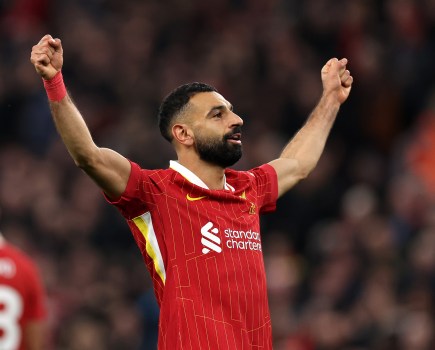 The more-than-a-century old rivalry between Glasgow giants Celtic and Rangers is well established in the minds of football fans the world over. The colourful, boisterous, sometimes violent, scenes when the two sides meet are Scottish footballs biggest export, beamed to millions of people in hundreds of places from New York to New Caledonia and beyond.
The more-than-a-century old rivalry between Glasgow giants Celtic and Rangers is well established in the minds of football fans the world over. The colourful, boisterous, sometimes violent, scenes when the two sides meet are Scottish footballs biggest export, beamed to millions of people in hundreds of places from New York to New Caledonia and beyond.
The social, cultural and religious backdrop, the almost monopoly-like vice on Scottish silverware and the close proximity of the two clubs to one another does nothing to alleviate the ferocity of the Old Firm Derby, rightly considered among the top three derbies in world football by Sky Sports, World Soccer, Fox Soccer and several other well-respected media outlets. Yet despite the omnipresent hostility and well pronounced divide one man was so well-regarded that he could command respect in both camps, a rare feat, which arguably made him bigger than the “Old Firm” label given to the two clubs. His name was Tommy Burns.
When Celtic legend Burns tragically succumbed to a reoccurrence of skin cancer in May 2008, the outpouring of grief was such, and the media interest in the man so high, that Sky Sports News and several Scottish and UK news stations beamed his funeral live. The death of Burns occurred on the morning of the UEFA Cup Final, being held that year in Manchester.
As fate would have it Rangers, rivals to Burns as a player and manager of Celtic, were contesting that final against Zenit St Petersburg and given the proximity of Manchester to Glasgow the fans had travelled in swathes to be there. Unbelievably, despite their own immense disappointment at failing to add the UEFA Cup to the clubs only other European trophy, the 1972 Cup Winners Cup, many Rangers fans travelling home from Manchester paid their own tributes to Burns at the home of their greatest rivals.
Ally McCoist, now the Rangers manager, but assistant manager to Walter Smith in the 2007/2008 season, remarked, “I’m told Rangers fans on their way back from Manchester stopped at Celtic Park to pay their respects. That’s sensational.”
With many Rangers fans leaving scarves, jerseys and writing condolence messages, it was clear that Tommy Burns was a figure who commanded respect among large sections of the Rangers support.
McCoist was in a position to explain this better than most, “But if you didn’t like Tam Burns then there was something wrong with you. He was one that crossed the divide.”
It would be difficult to pinpoint exactly what made Burns so likeable even among those whose colours he never wore, but one explanation could be his working class background which resonates with many of the fans of both of the Glasgow giants.
Thomas “Tommy” Burns was 69 years the junior of the club he loved, but born in the same place – The impoverished Calton district in the East End of Glasgow. As a school pupil he attended Saint Mary’s Primary School, which looked onto his local parish, Saint Mary’s. It was in the building behind the church and beside the school, the local church hall, that Celtic Football Club were established, as a charity to provide meals for the large influx of Irish immigrants who had settled in the East End of Glasgow, particularly in the Calton district.
The swift success of Celtic, and their links to the church and Irish immigrant population, made them an instant favourite among many football-mad Glaswegians. By the time Burns was born in 1956 Celtic and Rangers had already become the two dominant Scottish sides, a title neither would relinquish during Burn’s lifetime.
As a youngster Burns dreamed of playing for his idols, just as many Glasgow boys do, and he was still at St Mary’s Primary when, aged just 10 years old, he watched his heroes become the 1967 European Champions.
Davie Provan, who played with Burns at Celtic, understood the significance of Burns’ background on his ambitions, “He was born and brought up in the Calton district of Glasgow – a stone’s throw from Celtic Park – and he got to live the dream.”
And live the dream is what Burns did. Several of the “Lisbon Lion” heroes that he had from the 1967 European Cup success would be his teammates by the time he signed for Celtic as a promising 16 year-old. It would be two years, much of it spent on loan to the Maryhill Junior side, before Burns would debut for the hoops but when he did he found himself shoulder to shoulder with men he had grown up idolising.
Coming on as a second half substitute in a league match against Dundee in 1975, Burns was being managed by European Cup Winning manager Jock Stein, playing against Lisbon Lion goal-scoring hero Tommy Gemmell, and playing alongside Bobby Lennox and Billy McNeil, the captain that day and also on that famous Thursday in May eight years earlier.
Jimmy Johnstone, with whom Tommy would oft be compared given the flame red hair that made both men stand out on the field, was still a Celtic player but did not feature in Burns’ first match for the club. With youngsters Danny McGrain and Kenny Dalglish also in the side that day it was very much a team in transition having relinquished their grip on the top flight title that season after nine consecutive league title wins.
The newspapers could see that Burns would be an important figure in the Celtic rebuild writing that the 18 year-old was, “…obviously a boy to keep an eye on” following an impressive showing from the teenager.
Despite appearing for Celtic in 1975, it would be 1977 before Burns became a regular in the side. Throughout his 20’s his stature at the club grew as his performances in central midfield ensured that he became a firm fans favourite. Burns’ distinctive red hair made him easy to spot on the field but it was the cultured left foot of the lifelong Celt which made him truly unmissable.
Burns would star for Celtic in six league title wins, four Scottish cup titles and in a victorious league cup campaign during his 16 years at the club. Whilst Burns’ generation did not match the feats of those who preceded them in European competitions, his own performances in the European matches he featured in did not go unnoticed. Johan Cruyff famously remarked that, “In the Celtic team I liked the red-haired man” after an impressive performance by Burns against Ajax in the 1982 European Cup.
Following over 500 appearances and 81 goals for his boyhood heroes, Burns made the difficult decision to leave Celtic in search of regular first team football at the age of 32. Burns was to play his last match for Celtic in a friendly against Ajax and described later how heart-breaking the experience had been for him, “I wanted to go out with a smile on my face and not a tear in my eye. So I got all of my crying out of the way during the warm-up. I ran about the pitch for 20 minutes with tears running down my cheeks because I knew I would never wear a Celtic jersey again.”
Burns joined Kilmarnock in 1989, at that time playing one division below Celtic in Scotland’s second tier, and he was appointed player-manager in 1992. Burns made an instant impact winning promotion to the top-flight in the 92/93 season and this success would lead to Burns being reunited with his boyhood heroes once again.
Burns was appointed Celtic manager in 1994 with the club suffering five previous trophy-less seasons before his arrival. His brief was clear, bring back success to the Glasgow giants, and whilst Celtic finished a miserable fourth in the league, they ended the six year trophy drought with a slender one goal victory over Airdrieonians in the 1995 Scottish Cup Final.
The Scottish Cup was to be the only trophy of Burns’ three year management reign. Celtic challenged seriously for the title in both the 95/96 and 96/97 seasons, losing just one game in the former, but Burns could not prevent Rangers equalling Celtic’s record of nine consecutive league titles and he was sacked as a result. Despite this it would be wrong to categorise Burns’ time in charge of Celtic as a failure.
Burns is credited with laying the foundations for the Celtic side that would prevent Rangers from winning a tenth title in-a-row. Whilst the hallmark of his time as manager was the quick passing and attacking mentality of his side as he brought attractive football back to Parkhead after a series of disappointing sides in the early 90’s. Peter Rafferty, Secretary of the Association of Celtic Supporters Clubs, spoke for the fans when Burns died saying that he was, “a manager who played football the way Celtic supporters like to see it.”
Burns’ connections with Celtic would not end with his dismissal. The lifelong Celt would continue to answer the call when asked to run Celtic’s youth set-up under Martin O’Neill, making a big impact on the career of Aiden McGeady, and then becoming a major part of Gordon Strachan’s backroom team as Celtic dominated Scottish football at the start of the 21st century.
It was whilst working as Strachan’s first team coach that Burns first announced his battle with melanoma. Burns overcame the deadly form of skin cancer in 2006 but suffered a reoccurrence in 2008 which was to tragically claim the life of the Celtic legend. The outpouring of grief at the news of Burns’ death was a testament to his career, popularity and personality and to the way in which he was viewed by fans of Celtic and those of other clubs.
At his funeral, held in St Mary’s in his birthplace of the Calton, the world saw the Old Firm united. Burns was able to bring together the managers, representatives of the playing staff and fans of both Glasgow sides and the images of Rangers manager Walter Smith and assistant Ally McCoist wiping away tears as they carried Burns’ coffin were seen worldwide.
The reaction to his death brought a lot of attention to the philosophy that Burns had espoused his whole life. As Celtic manager Burns had once said, “Educate the kids to integrate with one another and not pay any attention to who’s a Catholic and who’s a Protestant, and any of that rubbish. Just go out there, support your team, make good friends and get on with your lives.”
Burns had lived his life that way. McCoist said, “Not having an enemy in the world is a great legacy to leave behind.” But his legacy is more than that. Not only did Burns not have an enemy, but he brought enemies together.
For all the games, the goals, the glory, for the league and cup wins as a player, the Scottish Cup win as manager and for the moments of pure inspiration which brought joy to a generation of Celtic fans the reaction of Rangers fans to his death is a far more poignant legacy to leave behind. Tommy Burns was bigger than the Old Firm divide.
By Paul Bisland
This article originally appeared in In Bed with Maradona






